Thanksgiving Cactus, also known as Schlumbergera truncata, belongs to the Cactaceae family. Other common names include Christmas Cactus, Crab Cactus, or False Christmas Cactus. These plants, of the Schlumbergera genus, are beloved for their vibrant blooms.
Thanksgiving cactuses are epiphytic plants. They grow in a tropical environment. This species is native to the rainforests of Brazil.
Thanksgiving cactus typically flowers around Thanksgiving. The colorful blooms brighten homes as the outdoor weather turns cold. They are perennial plants, thriving in hardiness zones 10 and 11.
| Common name | Christmas Cactus, Crab Cactus, False Christmas Cactus, Thanksgiving Cactus |
| Botanical name | Schlumbergera truncata |
| Family | Cactaceae, Cactaceae |
| Genus | Schlumbergera |
| Species | truncata, truncata |
| Origin | Brazil’s rain forests, Brazil’s rain forests |
| Life cycle | Perennial |
| Plant type | Epiphyte |
| Hardiness zone | 10, 11 |
| Sunlight | Partial Shade |
| Maintenance | Low |
| Drainage | Well-Drained |
| Spacing | Less than 12 in., Less than 12 in. |
| Flowering period | Fall |
| Height | 6 in. – 1 ft. |
| Flower color | Gold, Yellow |
| Stem color | Green |
| Flower benefit | Long Bloom Season |
| Garden style | Rock Garden |
| Uses | Container |
I. Appearance and Characteristics
Schlumbergera truncata, the false Christmas cactus, is a species of plant in the family Cactaceae. It is endemic to a small area of the coastal mountains of south-eastern Brazil where its natural habitats are subtropical or tropical moist forests. It is the parent or one of the parents of the houseplants called Christmas cactus, Thanksgiving cactus or zygocactus, among other names.
Schlumbergera truncata resembles other species of the genus Schlumbergera in that it has leafless green stems which act as photosynthetic organs. The stems (cladodes) are composed of strongly flattened segments, which have two or three “teeth” of varying shapes along their edges and at the ends. The ends of the stems are “cut off” (truncated) rather than pointed. Individual segments are about 4–6 cm (1.6–2.4 in) long by 1.5–3.5 cm (0.6–1.4 in) wide.
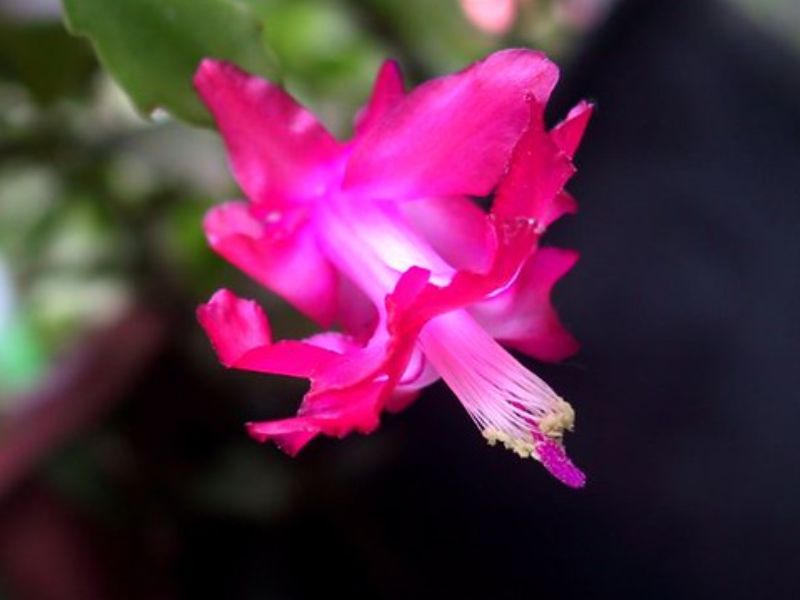
Special structures characteristic of cacti, called “areolas”, occur between two teeth at the end of segments. The areoles, which have brown wool and bristles up to 3 mm (0.1 in) long, are where the flower buds appear. The flowers are held at a constant angle somewhat above the horizontal with the higher side different from the lower side (zygomorphic, specifically bilaterally symmetrical).
The flowers are about 6.5–8 cm (2.6–3.1 in) long by 4–6 cm (1.6–2.4 in) across. There are six to eight tepals, which may be of various colors, including shades of red, orange, pink and white. The outer tepals (those at the base of the flower) are shorter and bent backwards, the inner sepals are longer and fused together at the base to form a floral tube; nectar is produced at the base of this tube. The lower inner petals are bent backwards so that the upper inner petals appear longer.
Plants flower in the autumn: around May in their natural habitat, in October to November in cultivation in the Northern Hemisphere; short days and long nights are necessary to induce flowering.
A characteristic of the genus Schlumbergera is that the many stamens are arranged in two series: the inner stamens form a ring around the style; the outer stamens arise from the floral tube. The filaments of the stamens are white, the anthers and pollen being yellow. The style has six to eight lobes at its end and is dark red.
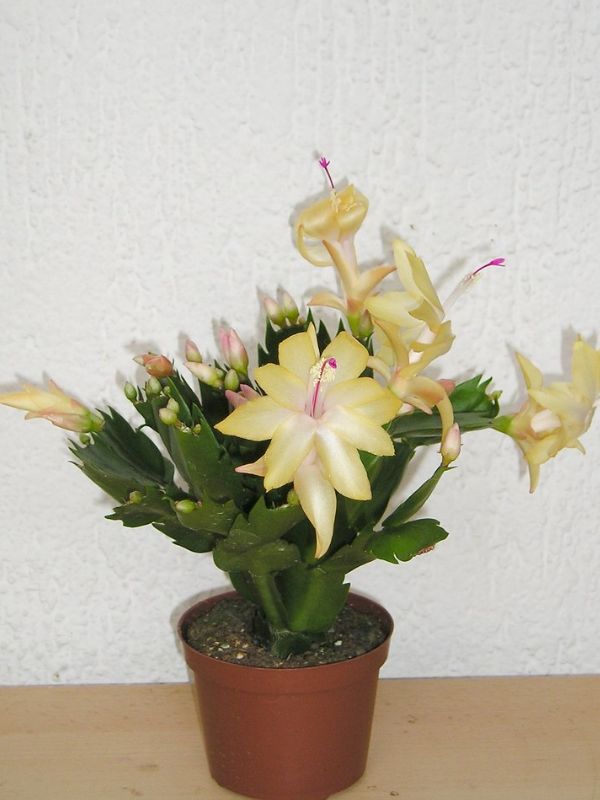
When ripe, the fruit is red, pear-shaped, and about 1.2 cm (0.5 in) long or exceptionally up to 2.3 cm (0.9 in) long. The shiny seeds are black, each with a diameter of about 1 mm (0.04 in).
II. How to Grow and Care
Sunlight
Thanksgiving cactus grows best in light shade during the summer months. You can give it more sunlight in the winter, when it is blooming.
Too much sun in the summer months can make the leaves pale and yellow looking. Too much sun can cause the leaves to turn reddish.
Room temperatures of 60 to 65 °F are ideal. Be especially careful of higher temperatures when the plant has buds on it.
Temperature and Humidity
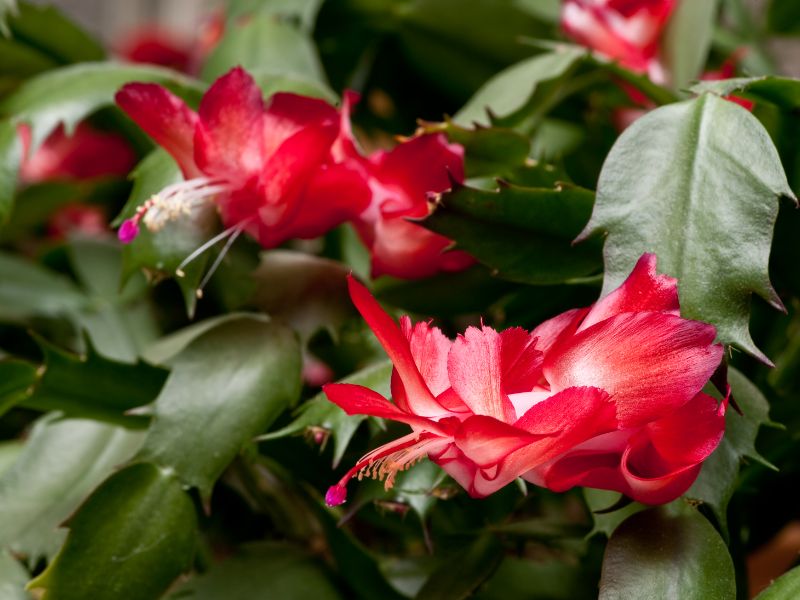
These tropical cacti thrive in warm, humid conditions. Ideally, keep the humidity around your Thanksgiving cactus above 50 percent, and temperatures between 60 to 65 degrees Fahrenheit (15 to 20 degrees Celsius). Average household temperatures are usually adequate for Thanksgiving cacti.
Watering
Because they are native to tropical and subtropical forests, Schlumbergera truncata are more thirsty than other cacti and other succulents. Make sure to give this plant enough water when the top inch of soil becomes dry. This plant cannot withstand low moisture or dry soil; it will die.
Take into account the season, weather, and environment when watering your Thanksgiving cactus. Water it every two to three days if you keep it outside in a hot, dry environment.
Soil
In its natural environment, the Thanksgiving cactus grows from trees, surviving off of the decaying organic matter from the bark. When it is grown as a houseplant, the Thanksgiving cactus should be grown in a potting mix that is humus-rich, airy, and well-draining with an acidic pH. One part peat moss, one part perlite, and one part orchid bark is a perfect mixture.
Fertilizing
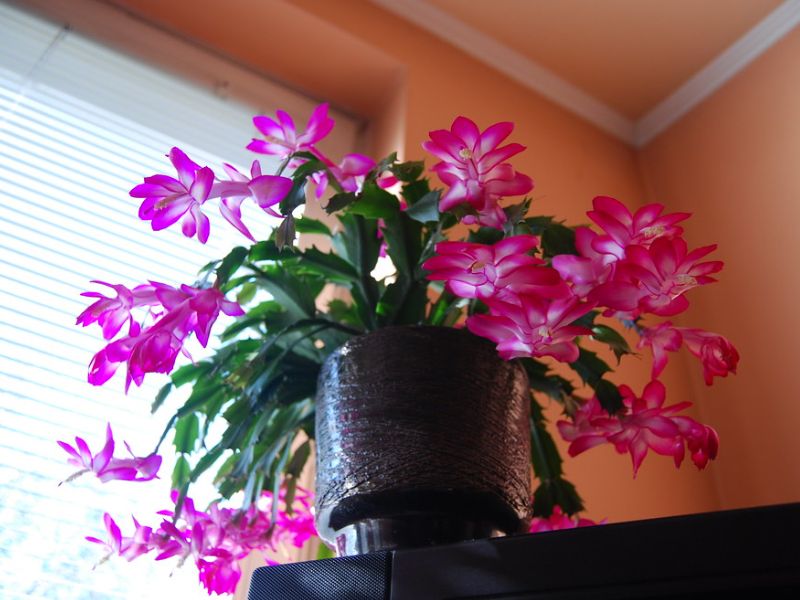
The Thanksgiving cactus should be fertilized regularly throughout the growing season to help promote blooming in the fall. Apply a balanced, diluted liquid fertilizer every two weeks during the spring, summer, and early fall. After the blooms have dropped, stop fertilizing the cactus until new growth begins in the spring.
Pruning
Regular pruning helps to create a healthy, bushy plant and even helps the plant to produce more blooms in the fall. It is best to prune a Thanksgiving cactus during the spring once new growth has started emerging. Every cut that you make will encourage branching at that location, so choose your cuts wisely. Make sure you save any cuttings that you take off of your plant for propagation.
Propagation
Thanksgiving cactus propagate prolifically from stem cuttings. Propagation is best done in the spring and summer when the cactus is in its active growing period. Avoid propagating during the winter once the Thanksgiving cactus has gone into dormancy.
Propagating a Thanksgiving cactus is not only a great way to repurpose pruning cuttings, but can also help you fill out an existing plant, or create new plants! Here’s how you can propagate by stem cuttings in a few simple steps:
- Using a pair of sterilized pruning shears or scissors take several leaf/stem cuttings (about 2-3 leaf segments long each).
- Set the cuttings aside in a cool, dry location for 24 hours to allow the cut ends to callous over.
- Prepare the potting container by filling a small plastic pot with pre-moistened potting soil.
- Plant the callused cuttings upright in the potting soil. Ensure that the cuttings are facing the same direction they were growing previously (i.e. don’t plant them “upside down”).
Get to Bloom
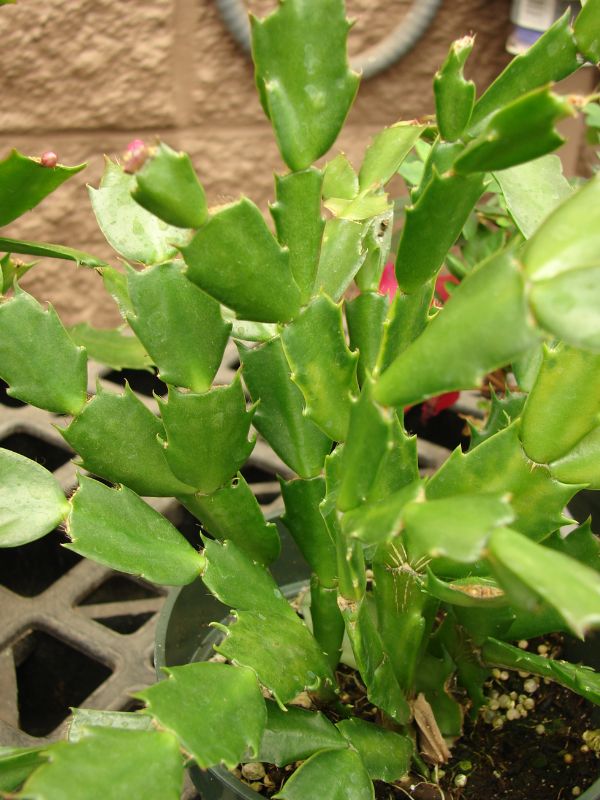
Thanksgiving cactus blooms in cooler temperatures and extended darkness periods. If your schlumbergera is not blooming, it might be in a high temperature surrounding or receiving too much light.
Here are some pro tips to have your Thanksgiving cacti bloom:
- To trigger blooming, expose it to prolonged darkness of at least 14 hours and less exposure to light between 8 to 10 hours for at least five weeks. If you have solid interior lighting at night, you’ll need to cover your cactus or relocate it to a location with less or no light.
- When the flower buds develop, they are most likely to flourish at 50 and 60°F.
- You may start the budding process earlier by exposing the plant to temperatures of around 45°F for several nights in a row.
- Ensure to water the plant regularly throughout its blooming process. If the plant becomes overly dry, it may drop its buds.
- Don’t worry if the cactus sheds its buds one winter: it should flourish the next season!
Pests and Diseases
Common Pests and Diseases
These plants are generally disease free, unless they are overwatered.
Fungal diseases caused from over-watering are something to be on the look out for. This could show itself with limp leaves that look mushy and easily fall off.
If you notice the leaves are turning reddish instead of green, this is an indication of too much sun, too little water, or a lack of phosphorus.
Mealybugs are an insect that can be a problem for your Thanksgiving cactus. Mealybugs show up as tiny white insects that have a cotton-like look to them.
To remove mealybugs, use a toothpick or soft toothbrush to take them off. You can also use a cotton swab dipped in rubbing alcohol. Be careful, though. Too much rubbing alcohol can damage the leaves. If other treatments fail, you may want to try a systemic insecticide formulated for indoor plants.
Spider mites are also possible. They are very tiny and hard to see with the naked eye. Evidence of an infestation is fine webbing or speckles on the leaves. Insecticidal soap spray will treat them.
If left untreated they leave a sticky substance on the leaves that can attract mold.
Common Problems
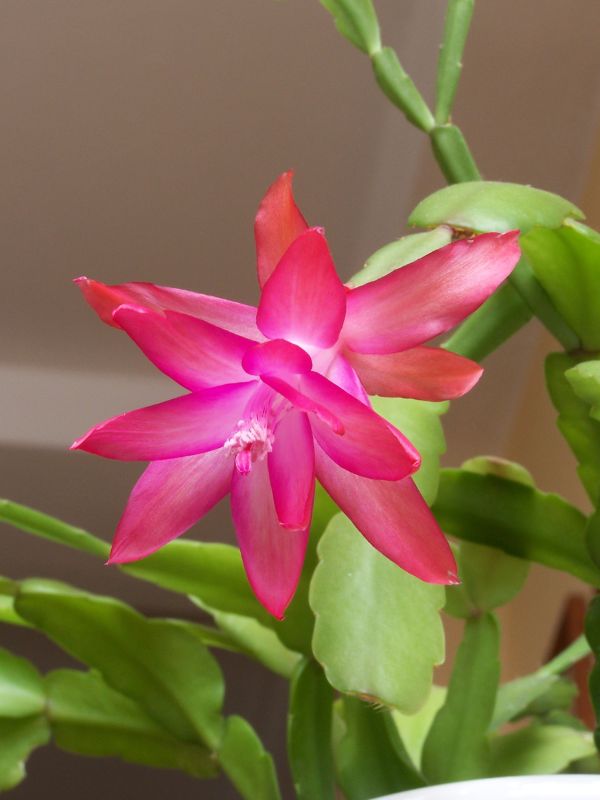
Overall, Thanksgiving cacti are relatively problem-free and easy to grow indoors. Common problems tend to arise from improper watering or issues with blooming.
- No Blooms
Growers often force Thanksgiving cacti to bloom just prior to selling them during the holiday season and it is not uncommon that the plants don’t bloom during their second year. You may have to wait patiently for a year or two before you see blooms again. Additionally, you will need to provide your Thanksgiving cactus with the proper conditions in order to induce blooming indoors, otherwise it is unlikely they will bloom naturally.
- Flower Buds Falling Off
Thanksgiving cacti are sensitive to changes in temperature and environment, and if they are exposed to drastic changes during flowering it is not uncommon for the plants to begin dropping buds and flowers. Ensure that you provide a stable, consistent environment during blooming to prevent this.
- Leaves Turning Yellow
Yellowing leaves can be an indication of two different problems. If the leaves are turning yellow and mushy, overwatering is likely the issue. Ensure that you have proper drainage and the roots are not left sitting in water. Yellowing leaves can also be an indication of too much sunlight. Avoid placing your Thanksgiving cactus in direct sunlight.
Buy Plants

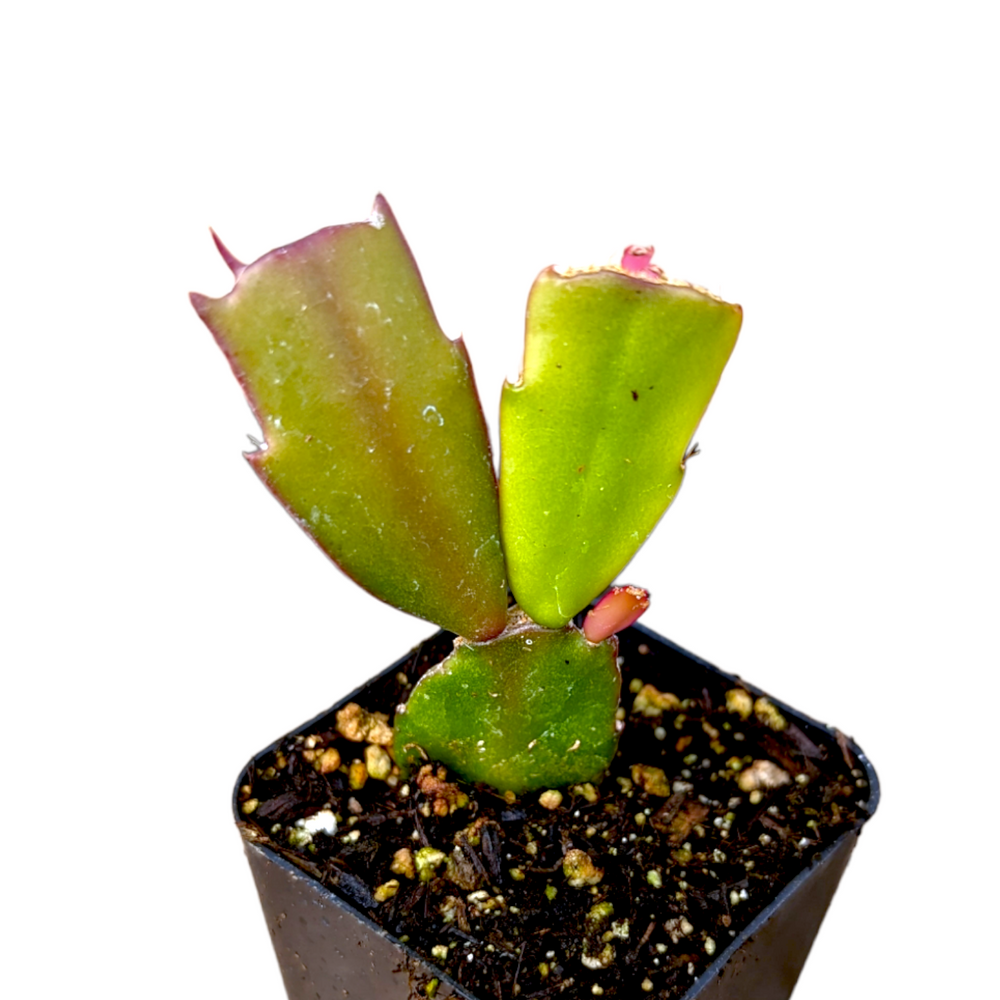

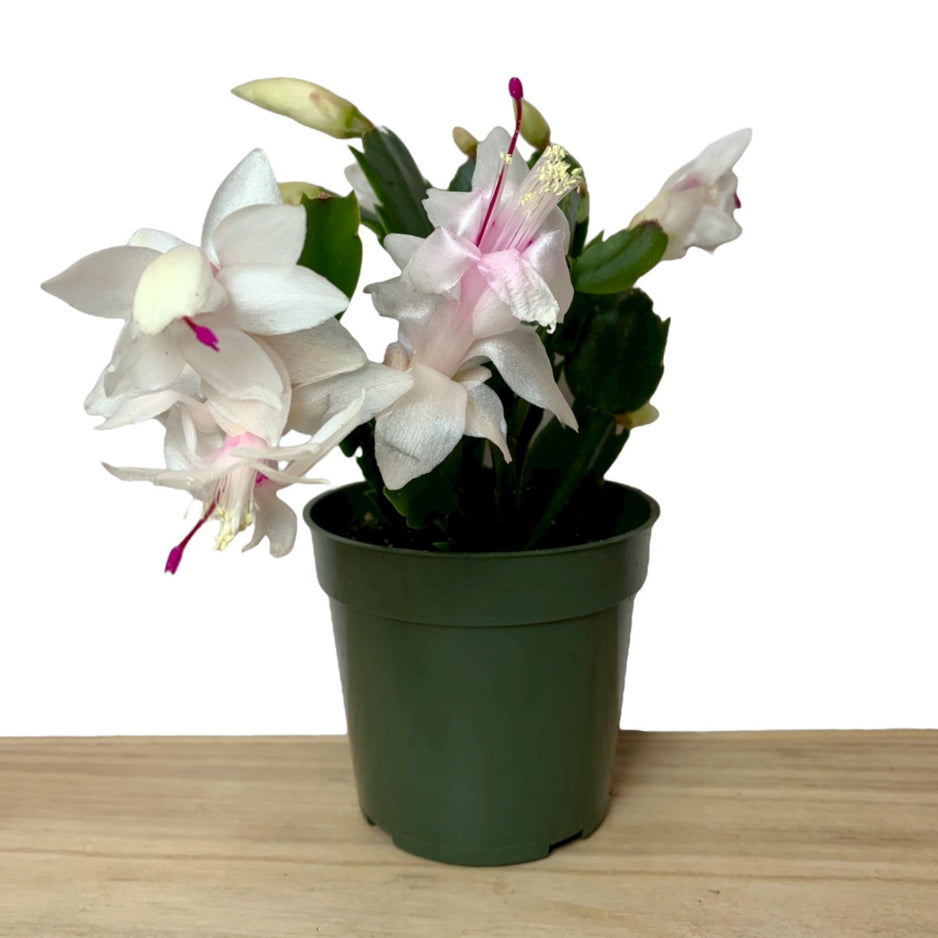

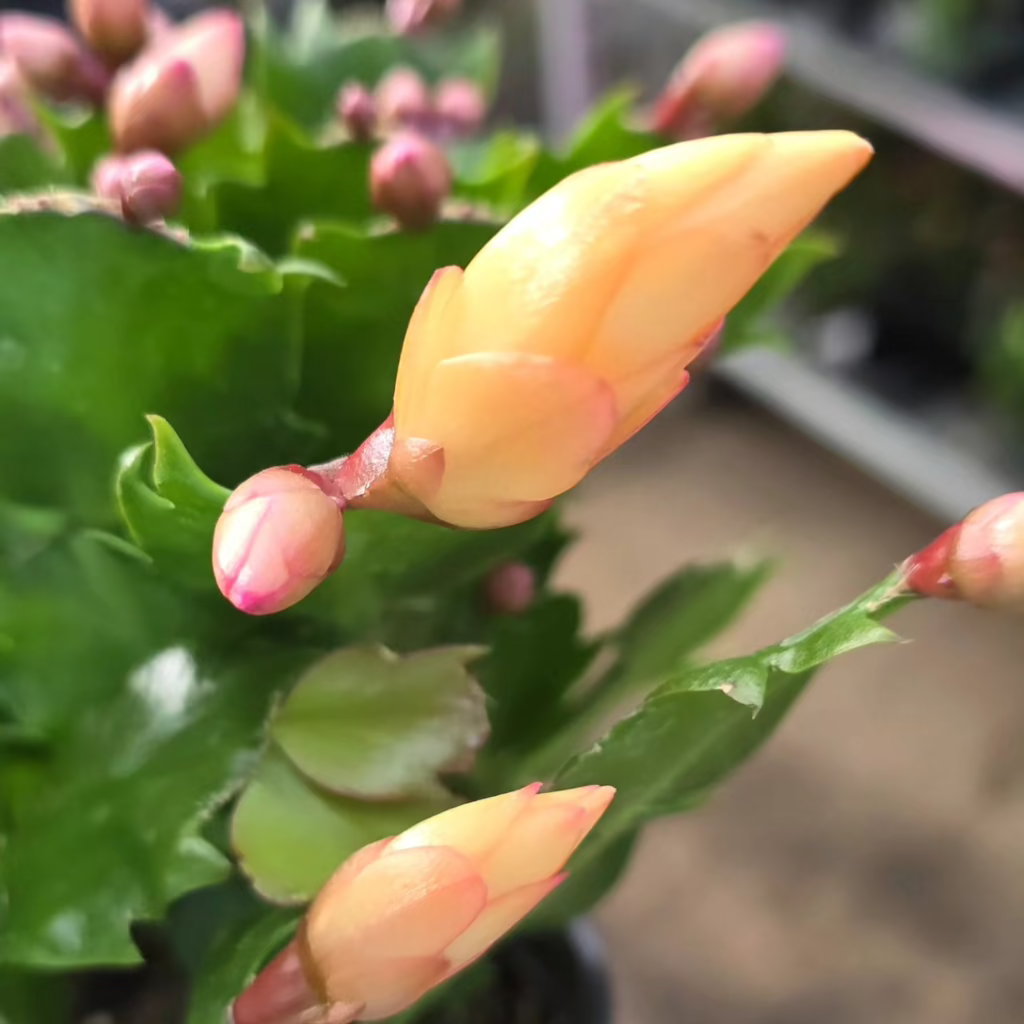

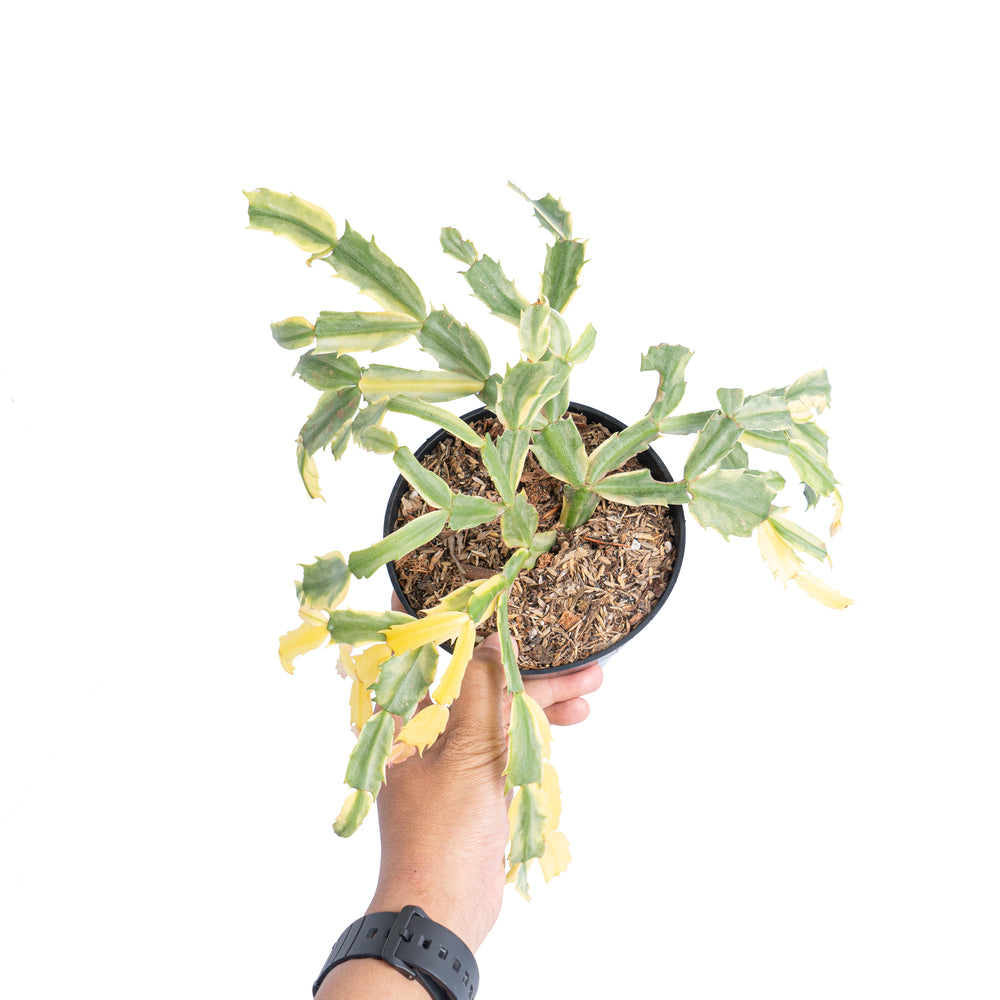


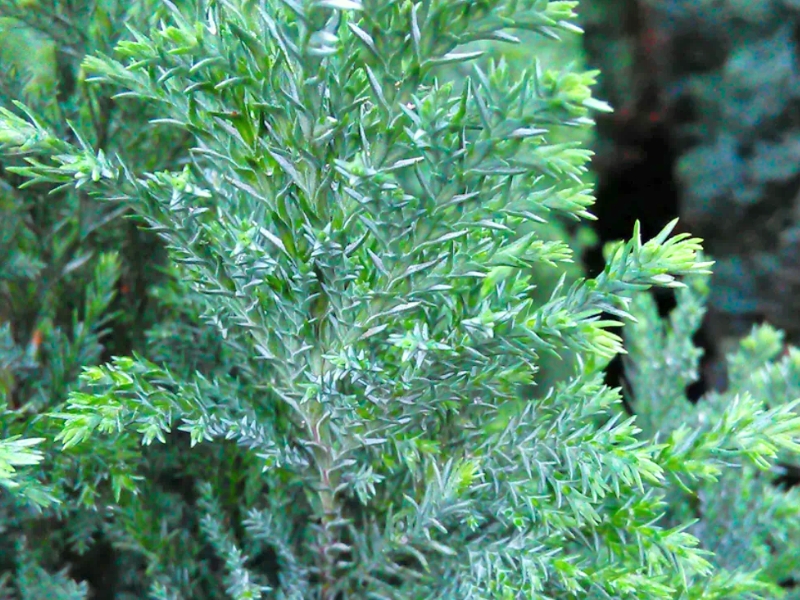
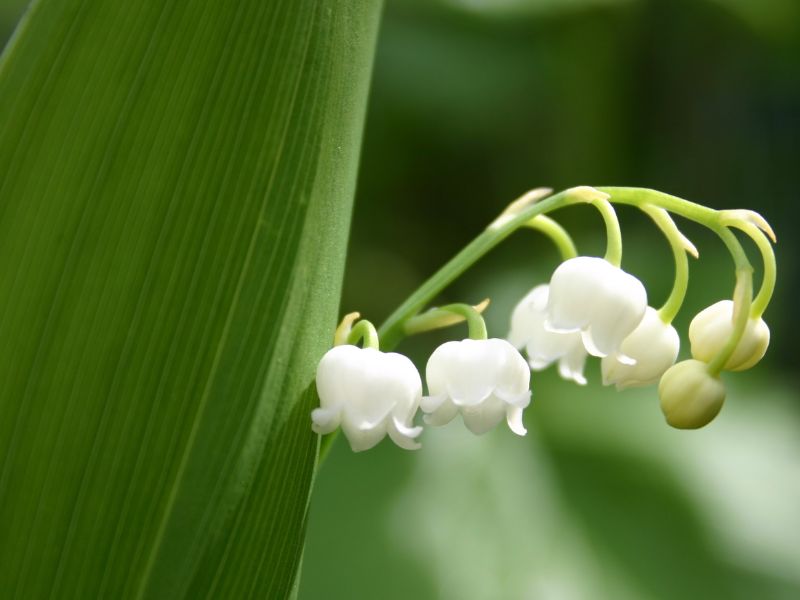
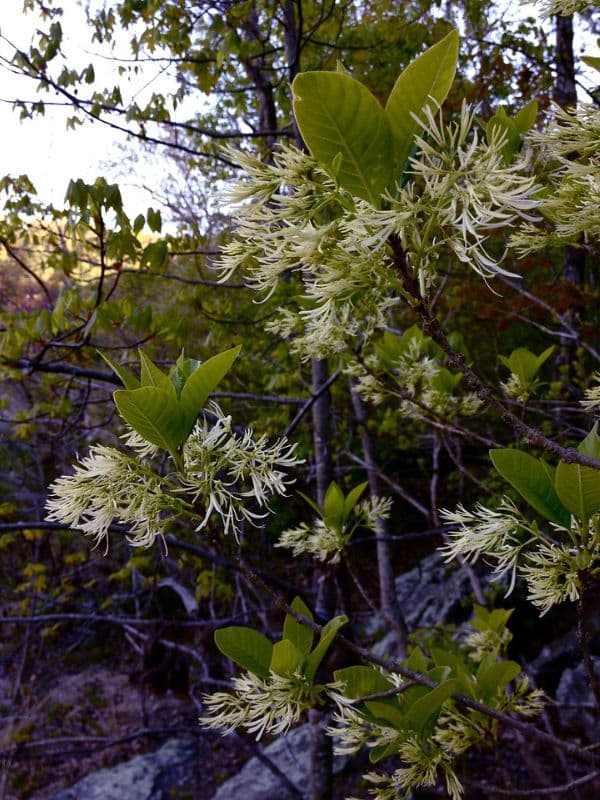
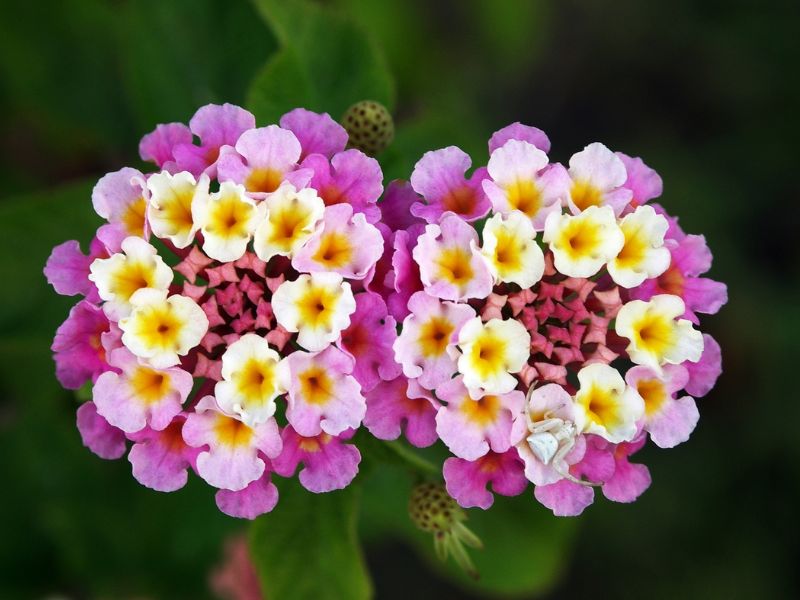
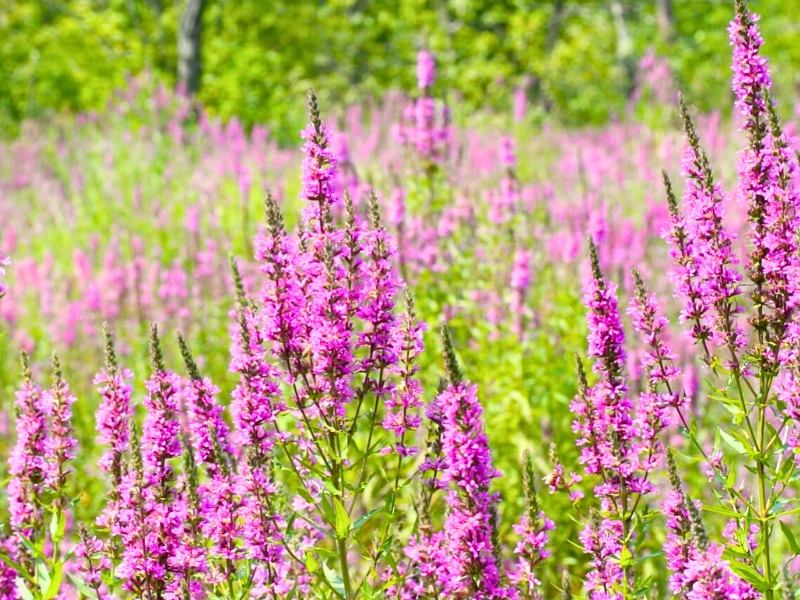
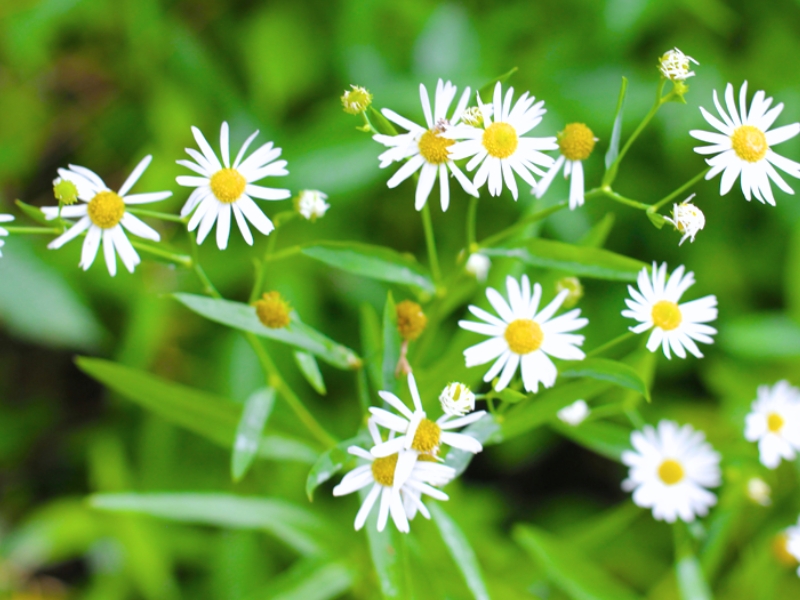
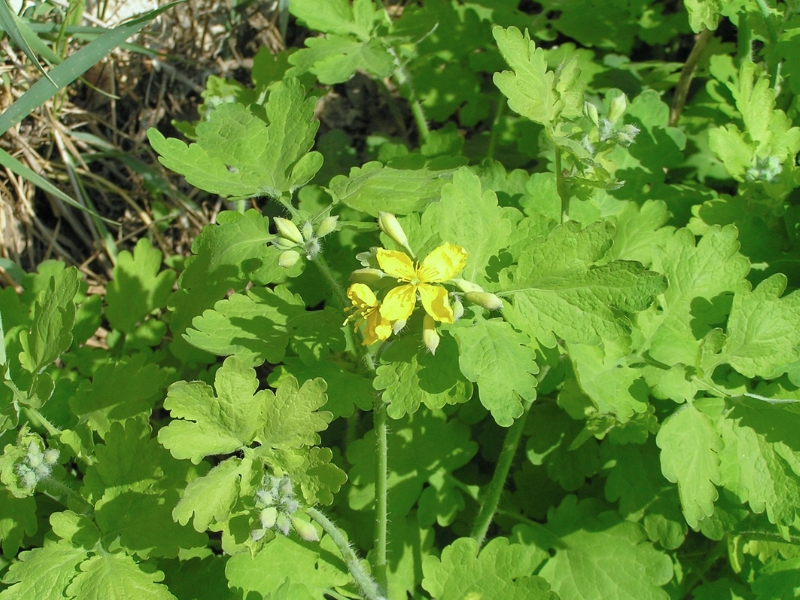
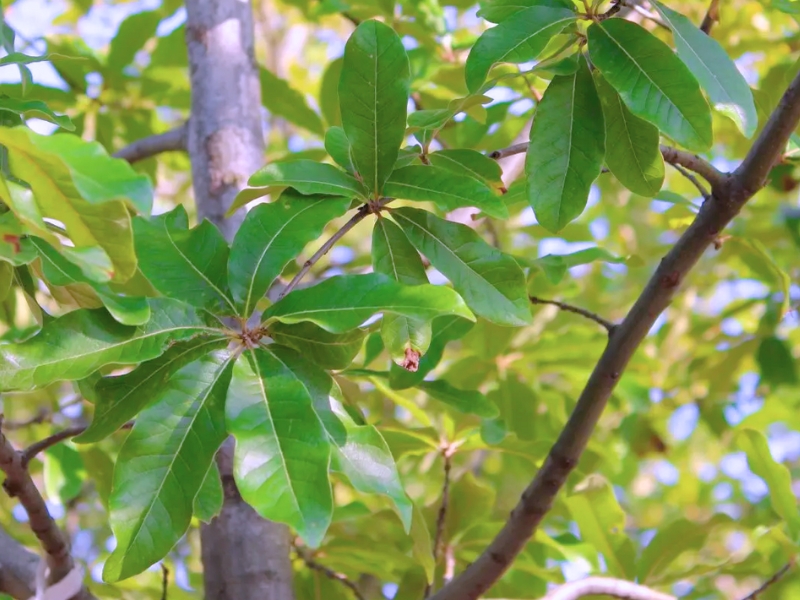
Leave a Reply